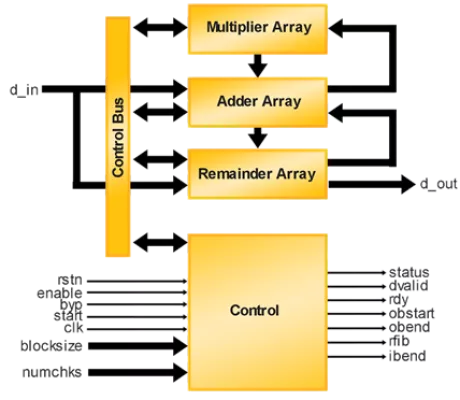Reed-Solomon codes are used to perform Forward Error Correction (FEC). FEC introduces redundancy in the data before it is transmitted. The redundant data (check symbols) are transmitted with the original data to the receiver. For example, a Reed-Solomon decoder is used to help recover any erred data. This type of error correction is widely used in data communications applications such as Digital Video Broadcast (DVB) and Optical Carriers (i.e. OC-192).
The codes are referred to in the format RS(n,k) where k is the number of s-bit wide information (data) symbols and n is the total number of s-bit wide symbols in a codeword. The Reed-Solomon encoder generates a code such that the first k symbols output from the encoder are the information symbols and the next n-k symbols from the encoder are the check symbols added for error correction. When the data output is in the same order as the input it is referred to as a systematic encoder.
Reed-Solomon Encoder
Overview
Key Features
- 3- to 12-Bit Symbol Width
- Configurable Polynomials Field polynomial
- User-defined Codewords Maximum of 4095 symbols
- Selectable Reed-Solomon Standards OC-192
- Fully Synchronous User-configured latency2
- Systematic Encoder
- Full Handshaking Capability
Block Diagram
